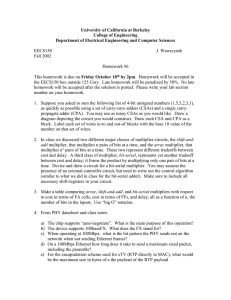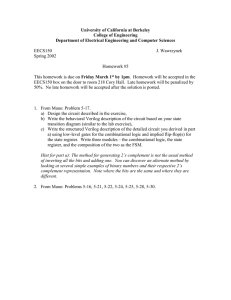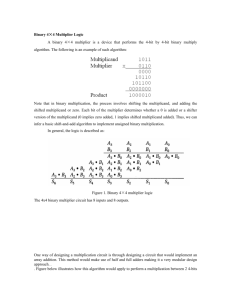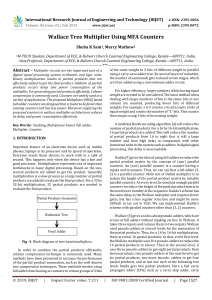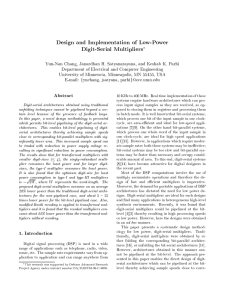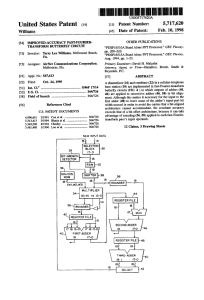University of California at Berkeley College of Engineering
advertisement
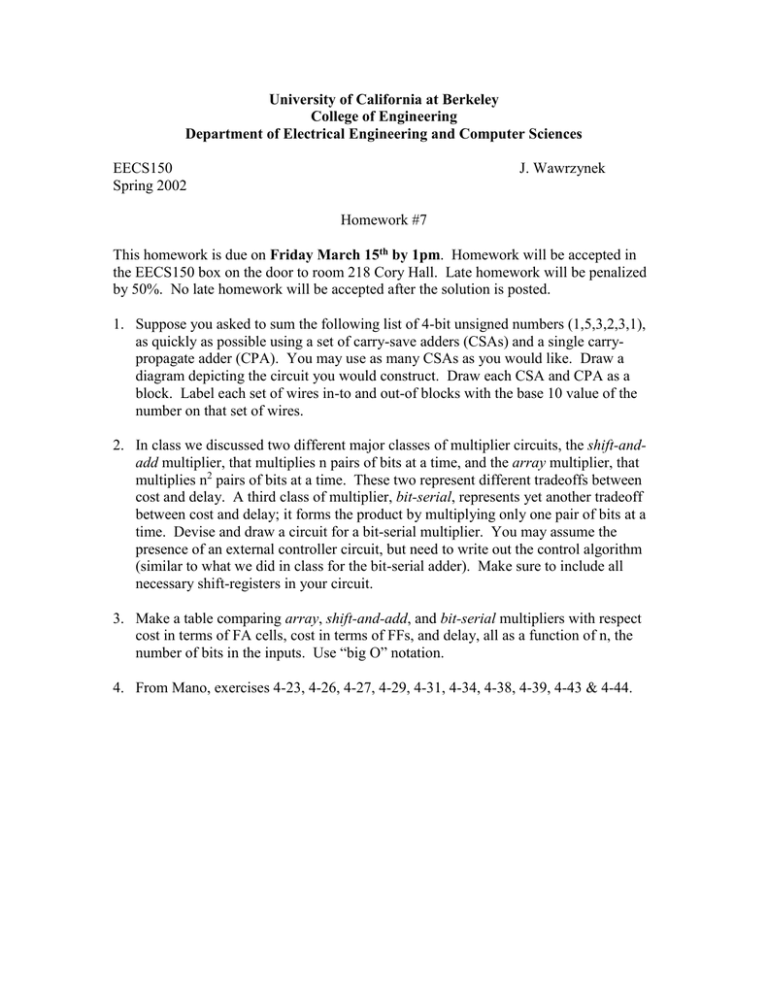
University of California at Berkeley College of Engineering Department of Electrical Engineering and Computer Sciences EECS150 Spring 2002 J. Wawrzynek Homework #7 This homework is due on Friday March 15th by 1pm. Homework will be accepted in the EECS150 box on the door to room 218 Cory Hall. Late homework will be penalized by 50%. No late homework will be accepted after the solution is posted. 1. Suppose you asked to sum the following list of 4-bit unsigned numbers (1,5,3,2,3,1), as quickly as possible using a set of carry-save adders (CSAs) and a single carrypropagate adder (CPA). You may use as many CSAs as you would like. Draw a diagram depicting the circuit you would construct. Draw each CSA and CPA as a block. Label each set of wires in-to and out-of blocks with the base 10 value of the number on that set of wires. 2. In class we discussed two different major classes of multiplier circuits, the shift-andadd multiplier, that multiplies n pairs of bits at a time, and the array multiplier, that multiplies n2 pairs of bits at a time. These two represent different tradeoffs between cost and delay. A third class of multiplier, bit-serial, represents yet another tradeoff between cost and delay; it forms the product by multiplying only one pair of bits at a time. Devise and draw a circuit for a bit-serial multiplier. You may assume the presence of an external controller circuit, but need to write out the control algorithm (similar to what we did in class for the bit-serial adder). Make sure to include all necessary shift-registers in your circuit. 3. Make a table comparing array, shift-and-add, and bit-serial multipliers with respect cost in terms of FA cells, cost in terms of FFs, and delay, all as a function of n, the number of bits in the inputs. Use “big O” notation. 4. From Mano, exercises 4-23, 4-26, 4-27, 4-29, 4-31, 4-34, 4-38, 4-39, 4-43 & 4-44.
